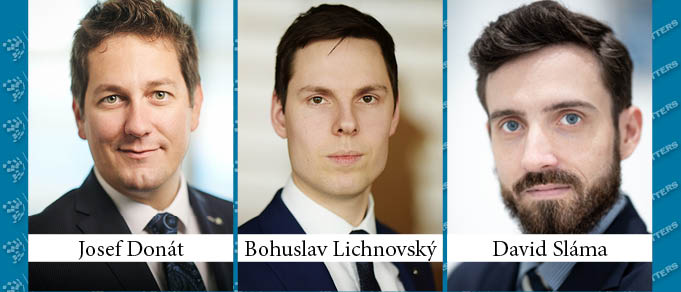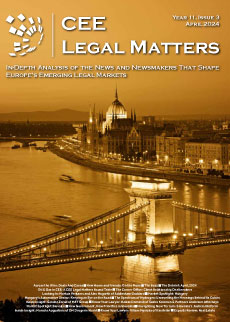It has been roughly a year since the somewhat controversial DSM Directive entered into force on June 7, 2019. The clock is ticking as the EU member states are required to transpose the Directive into national law within 24 months—a half of which is already gone. The most discussed provisions of the DSM Directive are included in its Articles 15 and 17.
This article covers the former of the two and its impact on the online aggregators which provide their services to users within the EU. Firstly, publishers and aggregators are introduced, together with interactions between the two, including their advantages and disadvantages. The article then follows with a description of the rights to be granted by the transposition of Article 15 of the DSM Directive together with the exceptions and their limitations. Experiences with similar legal regulations are discussed afterwards and the possible impact of Article 15 is evaluated.
Publishers and Aggregators
Article 15 aims to protect press publications in the online environment, in particular with regards to the use of such by information society service providers (“ISSP”). The DSM Directive recognizes the contemporary paradigm of the online availability of press publications through services, such as news aggregators and media monitoring services, as noted in the Directive’s Recital 54, the first of a handful covering the basis for the provision of Article 15.
The DSM Directive explains the difficulties of press publications’ publishers in the online environment. Basically, the publishers invest in their businesses in order to facilitate the creation of works by their authors, which they seek to economically exploit, often via advertisement revenue generated by user traffic on publishers’ websites. The aggregators utilize a similar concept, but instead of creating content, they use content of various publishers, in whole or typically in part, without the necessity of such an investment. The publishers’ argument is that the availability of works by their authors on the aggregators’ platforms siphons online traffic off of the publishers’ websites, therefore damaging their advertisement revenue.
But which ISSPs can be considered aggregators and are about to be affected by Article 15? Mostly, discussions tend to circle around various news services, such as Google News. These websites provide their users with a news feed put together from various articles taken in part from other websites. Usually, the title of an article, often with a picture and sometimes a first few words or sentences, is presented with a hyperlink which takes the user to the source website where the full article is available.
However, such excerpts of articles often appear in other services, most notably in social media like Facebook, Twitter, or LinkedIn, where the service automatically adds such an excerpt to a post which contains a hyperlink to the compatible content. Such an addition usually contains the headline of the linked article together with a picture and a few words extracted from the source. Also, news is far from being the only content used in this way. A good example of another kind of online aggregator is Metacritic—a website focused on reviews of multimedia entertainment, namely videogames, movies, TV, and music. One of the core values of Metacritic is its algorithm, which aggregates critic’s scores from various sources to present its users a simple, one-number score evaluating a product. The individual source scores are displayed on the website, together with a one-paragraph excerpt from each utilized article and a hyperlink to its source.
Pros and Cons of the Existence of Aggregators
The matter of the existence of these online aggregators is far from being black-and-white, though, but rather comes with both pros and cons, as can be expected. The amount of information published and shared online in any given moment is immense, so it is understandable that users seek a sort of a guidance in the information jungle which the internet of nowadays has grown into. In this era when fact-checking is a necessity and the issue of fake news omnipresent, easy inclusion of sources of information in posts published on social media can also be considered remarkably useful.
For media outlets, especially smaller ones, the online aggregators can actually cause an opposite effect on traffic than the negative one described above. Users who check only a handful of well-known websites may never visit other ones, whereas the aggregators’ users can be interested in an attractive headline and visit websites which they have never heard of before. In theory, this can also promote quality among media, where good content may attract a wider audience. These effects were already observed in Spain and Germany, as described below.
Unfortunately, those advantages may easily become quite the opposite under different circumstances or even when considered from another point of view. If the users get a sufficient amount of information from the online aggregators, they may have very little incentive to visit the actual sources of the information concerned. There is no doubt that this is indeed the case when a significant part or entirety of the original content is available through an online aggregator.
As aggregators assist with spreading information in general, they can also help to share fake news or other similarly problematic or even illegal content. It is therefore obvious that some sort of regulation is indeed required—and will evolve in time together with the online environment itself. However, the regulation of this kind should affect the original sources of the problematic content, i.e. the subjects who have, contrary to aggregators, control over such content in the first place and is outside of the scope of the DSM Directive.
Even though the existence of aggregators is nothing new and there already is regulation in place, which applies to their operation, the need for a more particular legislation was identified and projected into Article 15 of the DSM Directive.
Rights Provided by the DSM Directive
The regulation to consider in connection with Article 15 of the DSM Directive is the Information Society Directive, namely its Article 2 and Article 3(2):
- Article 2 of the Information Society Directive asks the EU member states to grant authors, performers, phonogram producers, producers of the first fixations of films, and broadcasting organizations “the exclusive right to authorise or prohibit direct or indirect, temporary or permanent reproduction [of their works, performances, etc.] by any means and in any form, in whole or in part”.
- Article 3(2) of the Information Society Directive then asks the EU member states to grant performers, phonogram producers, producers of the first fixations of films, and broadcasting organizations “the exclusive right to authorise or prohibit the making [their performances, etc.] available to the public, by wire or wireless means, in such a way that members of the public may access them from a place and at a time individually chosen by them”.
- Finally, Article 15 of the DSM Directive asks the EU member states to grant these rights to “publishers of press publications established in a Member State (…) for the online use of their press publications by [ISSP]”.
In essence, the DSM Directive explicitly aims to grant publishers the same rights which are enjoyed by the authors and other subjects. This is, however, not a revolution of any sort. The works which are used by online aggregators have already been protected by copyright, and these rights, or their holders, remain untouched by the DSM Directive. As early as in 2009, the European Court of Justice stated, based on the Information Society Directive, in case C-5/08 (Infopaq) that even an extract of merely 11 words of the original article can be considered a protected reproduction in part of a work, if the extract expresses the author’s own intellectual creation.
The DSM Directive seeks balance between the interests of the ISSP and the rightholders, since it respects certain uses of works by aggregators and their positive impacts. At the same time, as is a common thought for more provisions of the Directive, it attempts to facilitate ways for the rightholders to be compensated for the uses of works, rather than to establish a needless restriction. The attempt to promote said balance is incorporated into Article 15 in the form of exceptions from the rights it grants, which need to be examined next, together with business practices of the aggregators, to get a full picture of the new regulation.
Exceptions to the Rights and their Limitations
To evaluate the impact of Article 15 of the DSM Directive, the copyright protection and ways in which the works are used must be considered, as well as the process of how the aggregators acquire content for their services.
The content used by an aggregator consists mostly of written articles, of which usually just short excerpts are used. Other types of content are also involved, like photographs (or pictures in general) or videos. Naturally, such works fall under copyright protection, which means certain subjects own the rights or enjoy the right to exercise economic rights.
Even though authors create works, it is often publishers who actually own or exercise the rights to them. In this sense, the DSM Directive barely changes anything per se, because under national legislations, it is usually publishers who have to be sought in order to get permission to use a work of this kind. The DSM Directive attempts to clarify how the aggregators and publishers should operate within more tangibly set boundaries. However, its approach is questionable, as it ultimately adds a new layer of rights and exceptions on top of the existing regulations, without handling their possible interactions. This can unfortunately end up as obfuscation, rather than clarification.
This can be illustrated on the scope of the content the ISSP shall be allowed to use according to the DSM Directive. One of the limitations of the protection granted by Article 15 is that it does not apply to hyperlinking. Another one exempts from the protection the “individual words or very short extracts of a press publication”. There are already examples of such exceptions, namely in France and Germany. The legislation in these countries is based on a qualitative point of view (as Recital 58 of the DSM Directive suggests the importance of the consideration whether the use of individual words or very short extracts undermines the investments made by publishers in the production of content). In France, the conditions of the exception are fulfilled if the use of very short extracts does not serve as a substitute to the source itself, i.e. if a user viewing an extract is still motivated to read the whole article. Germany proposes to allow extracts in the form of i) a headline, ii) a small (128 × 128 px) picture, and iii) a voice or video (or both) section within the duration of up to three seconds.
The German approach is interesting also because of how pictures are proposed to be handled. Basically, a picture is recognized, at least in some cases, as a part of an article, similar to a headline or another part of it. The size limitation may be a way to handle another interpretation—that a part of a picture or a smaller, lower-quality reproduction of it can be considered an excerpt of an original picture. Such an interpretation would fulfill the conditions of the exception in Article 15 mentioned above. This could also apply to short extracts or audio files or videos.
Last but not least, the rights provided in Article 15 expire two years from the publication of a work, counted from January 1 of the year following the publication, and shall not apply to works published before June 6, 2019.
Recent Experience in Aggregators Regulation
With the business of aggregators and the rights and exceptions of Article 15 described, it is possible to look for similar national legislation which may help with the evaluation of the impact of the DSM Directive. Based on these practical examples, it may be clearer how transpositions of the Directive may or may not change the paradigm of online aggregators.
In 2014, Spain passed a new law which imposed an obligation on aggregators to pay fees to the Association of Editors of Spanish Dailies for showing any, even a tiny, part of a publication. The motivation was to protect the media industry and was apparently mostly aimed at the Google News service (that is, however, provided freely and without ads). In reaction, Google closed the service in Spain and removed Spanish media from it. This, unsurprisingly, immediately hurt traffic to Spanish media websites. A study commissioned shortly after for the Spanish Association of Publishers of Periodical Publications showed that the new legislation was “absolutely harmful to the Spanish news media and innovation in general”.
Similar legislation was passed around the same time in Germany and the situation developed somewhat similarly. To avoid fees for displaying snippets from publishers’ articles, Google News in Germany changed to only showing headlines. As even that had a negative impact on news websites’ traffic, German publishers allowed Google to use snippets again. At the same time, publishers tried to put pressure on Google through the courts, arguing the dominant market position of the company.
After implementation of Article 15 in France, Google logically chose a similar approach. However, this time, the French Competition Authority (“FCA”) assessed that this conduct likely constitutes an abuse of Google’s dominant position, and thus FCA issued interim measures ordering Google to negotiate in good faith the terms and conditions as well as the remuneration due for the use of content from publishers.
The Impact of the DSM Directive on Publishers and Aggregators
As shown in the examples above, the relationship between the aggregators and publishers is a complex one, and often mutually beneficial. From the publishers’ standpoint, a part of the situation is finding ways of generating profit in the modern paradigm of declining print incomes and growing online consumption. Although aggregators have proven to positively impact online traffic on news websites, thus improving publishers’ ad revenue, the same publishers have been looking for improving this revenue by imposing fees on aggregators for using their works—partially also to alleviate the market power some of the aggregators enjoy.
In this sense, the DSM Directive aspires to improve the situation by clearer rules and exceptions. Ironically, the EU may be using the wrong tool for a good cause. As the Directive leaves a certain amount of space for national legislations in an attempt to harmonize the legal status of the aggregators within the EU, various transpositions of the Directive in member states may, at the end of the day, have an opposite effect.
In the worst-case scenario, the aggregators will have to adjust their services to the various requirements of different EU member states. This can lead to a closure of some services in some places, similar to Google News in Spain. Where they remain, the new rules may still prove ineffective in regulating big entities, who can still use their strong market presence to impose conditions, which are unfavorable to publishers, contrary to the goals of the DSM Directive. This means that Article 15 of the DSM Directive just adds one more right to play but does not solve the fundamental cause of these problems—the imbalance of power between the publishers and largest platforms.
Article 15 also considers merely publishers, while other rights and subjects are left to the already-existing regulations. Examples of such are authors themselves, whose rights are not affected by the DSM Directive. This coexistence of various regulations and multi-layered protection is not solved by the DSM Directive, maybe even worsened, and does not contribute to clarity in the aggregators-publishers relationship over the legal use of publishers’ works.
As a matter of fact, the practicalities of this relationship often come down to negotiation between the publishers and online platforms. In the case of dominance or agreements between competitors, the competition rules come into play. This can be illustrated by the experiences from Germany and France, where publishers agreed to Google News practices, but at the same time argued that they had been effectively forced to the agreement by the sheer market power of the service.
The EU member states have a little under one year left to transpose the DSM Directive and discussions about the particular nuances of the transpositions will continue. For many ISSPs, or aggregators specifically, changes can be expected to be rather minor, since these services have already been using rather short excerpts of works, pursuant to the already-existing regulations. Despite all the stir Article 15 caused, the final result may end up being underwhelming for all parties involved. The biggest risk is a scattered harmonization among the EU member states, which would impose obligations to comply with various new rules in different countries—a needless complication for the ISSP which does not contribute to achieving Article 15’s goals.
By Josef Donat, Partner, Bohuslav Lichnovsky, Senior Associate, and David Slama, Junior Lawyer, Rowan Legal



